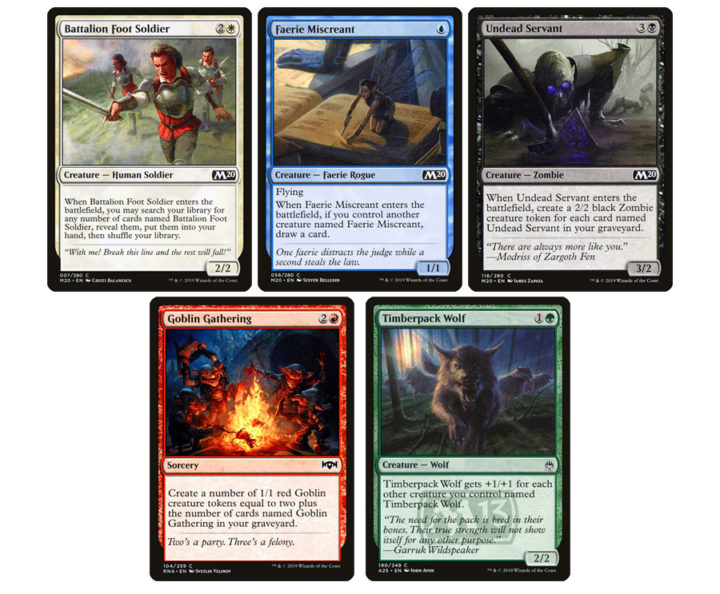The story of Lumeria begins in 2017. In a brainstorming session, I suggested we make our own masters set, but with inexpensive cards that we could sell at a reasonable price. A few months later, Chris VanMeter approached me about getting a list together.
The first Lumeria set was focused on two-color pairs and finding archetypes within those pairs. With the second iteration, we wanted to do something that Magic as a whole hadn’t done for a long time: emphasize single-color drafting. My goal going into design was to make “mono-colored matters” the main focus of the set and create archetypes that can be played with only one color. Ideally, at least half the players in each draft would end up with mono-colored decks.
The first iteration of the set was done right after War of the Spark released (those hybrid Planeswalkers were a perfect fit!), and each color had two archetypes with some amount of crossover. Wizards has been printing quite a few hybrid cards at lower rarities recently, and that really helped inform some of the archetypes. For example, one of the red/white common hybrid cards is both a soldier and a human, which helps one of each of those colors’ archetypes.
When I was building the packs for the first playtest, which was right after M20 was released, I noticed something strange. Nearly every set that Wizards releases has a slot for land. In most cases, those are basic lands, but sometimes they would print guildgates in those slots. I didn’t really want to put in basics, and I felt certain that no one wanted basic lands, so I gave it some thought. Then, it hit me:

What if we had a slot in the pack for a “double-common?” If we chose one card for each color, and dedicated a slot to it, there would literally be twice as many of them in any given draft. There was a cycle of cards released in M20 that cared about other cards with the same name, and there were quite a few commons in recent history that did the same, so I did some research.
The initial cards I chose for each slot were Legion Conquistador, Faerie Miscreant, Undead Servant, Goblin Gathering, and Growth Cycle. Early playtests showed that Growth Cycle wasn’t very good in the environment, so we switched it for Timberpack Wolf. We eventually switched out Legion Conquistador for Battalion Foot Soldier, too, to help with human synergy.
In playtesting, we found that sometimes, grabbing every copy of a specific double-common paid off. Having six or seven copies of Goblin Gathering in your deck is quite potent, and if you’ve played M20 draft on MTG Arena, you know how good Faerie Miscreant is in multiples. It felt like something special when you could focus on a single card, and a huge win when you collected a ton and got to play them all. It’s the design decision for the set that I’m most proud of, and I’d like to see more of this sort of thing in the future from Wizards and other custom Magic enthuiasts.
If you have any questions about Lumeria’s design, you can find me on Twitter at @madolaf or send me an email at aklesh@cardkingdom.com.

Adam is an Overstock Lead at Card Kingdom. He’s been playing Magic since 1994 and is always looking for new ways to enjoy his favorite game. Adam is an amateur game designer and has been creating original Magic card and mechanic designs since 2012, including Card Kingdom’s Lumeria: The Infinite City. You can find him on Twitter at @madolaf, and listen to his Magic design podcast, Beacon of Creation.
